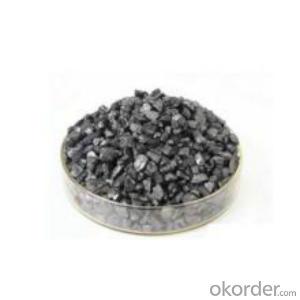FC 99% Calciend Petroleum Coke Manufactured in China
- Loading Port:
- Tianjin
- Payment Terms:
- TT OR LC
- Min Order Qty:
- 20.5
- Supply Capability:
- 2050 m.t./month
OKorder Service Pledge
OKorder Financial Service
You Might Also Like
Brief introduction
Calcined Petroleum Coke comes from delayed coke which extracted from oil refinery. Although Calcined Petroleum Coke contains a little bit higher level of sulfur and nitrogen than pitch coke, the price advantage still makes it widely used during steel-making and founding as a kind of carbon additive/carburant.
BaoSteel is world famous organization. This calcined petroleum coke's raw material is from Bao Steel, which has great quality guarantee. Bao Steel also named this coke as Pitch Coke.
Features
Our product has follwing advantages:
The morphology, chemistry and crystallinity of recarburisers
have a major impact on the overall casting cost. The combined
application and cost benefits, which are derived through the
use of Desulco, enable foundries to manufacture castings in a
highly cost effective manner. It is playing more and more important role in the industry
reduces
Recarburiser consumption
Power consumption
Inoculant consumption
MgFeSi consumption
Furnace refractory wear
Scrap rate
Tap to tap time
Slag inclusions risk
Chill
increases
Casting microstructure
Productivity
Process consistency
Specifications
Products | CPC | ||
F.C.% | 98.5MIN | 98.5MIN | 98MIN |
ASH % | 0.8MAX | 0.8MAX | 1MAX |
V.M.% | 0.7 MAX | 0.7 MAX | 1 MAX |
SULFUR % | 0. 5MAX | 0. 7MAX | 1MAX |
MOISTURE % | 0.5MAX | 0.5MAX | 1MAX |
Pictures
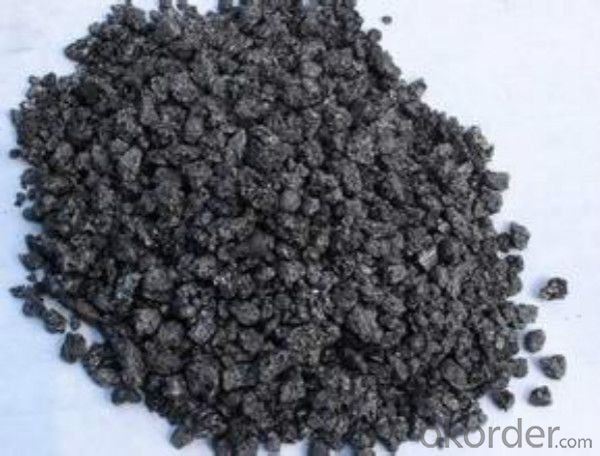
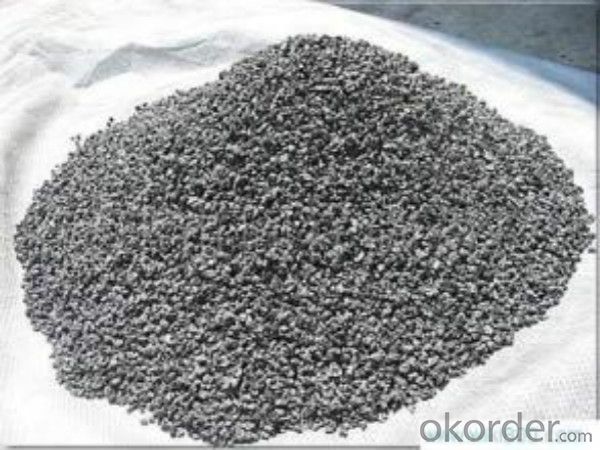
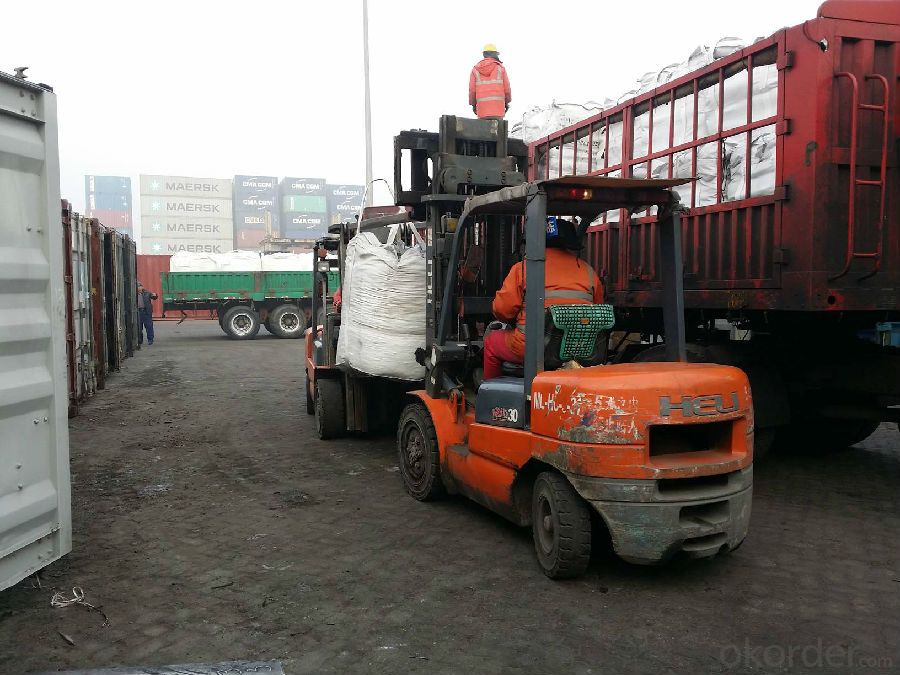
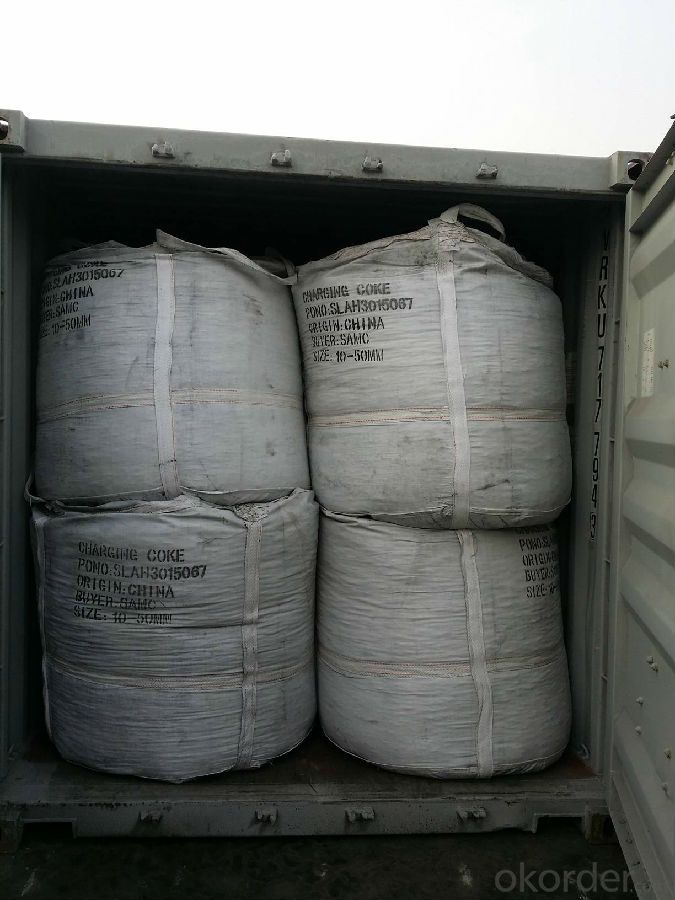
FAQ
1 What is the package?
In jumbo bag with/without pallet
2 What is the delivery time?
25 days after receiving the workable LC or down payment
3 What is the payment term?
T/T, L/C,D/P,D/A
- Q:How does carbon dioxide affect waste management processes?
- The impact of carbon dioxide on waste management processes is significant. One way it influences waste management is through the decomposition of organic waste. When organic waste, such as food scraps or yard waste, is sent to landfills, it decomposes without oxygen, resulting in the production of methane. Methane is a powerful greenhouse gas that contributes to climate change, being approximately 25 times more effective at trapping heat in the atmosphere than carbon dioxide over a 100-year period. Thus, the presence of carbon dioxide indirectly leads to increased methane emissions, exacerbating the greenhouse effect. Additionally, carbon dioxide emissions can occur during waste management activities like transportation and disposal. Vehicles that run on fossil fuels are used to collect and transport waste to landfills or incineration facilities, releasing carbon dioxide into the atmosphere. Furthermore, the incineration process itself produces carbon dioxide as a byproduct. To mitigate the impact of carbon dioxide on waste management, several strategies can be employed. Firstly, efforts to reduce waste and recycle can decrease the need for landfilling or incineration, consequently reducing carbon dioxide emissions. Moreover, implementing waste-to-energy technologies, such as anaerobic digestion or landfill gas capture, can harness the energy potential of organic waste while reducing methane emissions. Anaerobic digestion converts organic waste into biogas, which can be used for electricity or heat generation. Landfill gas capture systems collect methane emitted from landfills and repurpose it for energy production. Lastly, transitioning to low-carbon transportation options, like electric or hybrid vehicles, for waste collection and transportation can help decrease carbon dioxide emissions associated with waste management processes. In conclusion, carbon dioxide impacts waste management by contributing to methane production during organic waste decomposition and by generating emissions during waste transportation and disposal. By implementing waste reduction strategies, waste-to-energy technologies, and transitioning to low-carbon transportation options, the impact of carbon dioxide on waste management can be minimized, resulting in more sustainable and environmentally friendly waste management practices.
- Q:What is carbon nanophotonics?
- Carbon nanophotonics is a branch of science and technology that focuses on the study and manipulation of light at the nanoscale using carbon-based materials. It involves the integration of carbon-based nanomaterials, such as carbon nanotubes, graphene, and diamond nanoparticles, with photonics to enable the development of novel optical devices and systems. The unique properties of carbon-based nanomaterials, such as their exceptional electrical conductivity, high mechanical strength, and excellent optical properties, make them ideal candidates for applications in nanophotonics. These materials have the ability to confine and manipulate light at the nanoscale, allowing for the miniaturization of optical components and the realization of enhanced light-matter interactions. Carbon nanophotonics has a wide range of potential applications across various fields. One prominent area is in telecommunications, where carbon nanomaterials can be used to develop high-speed and compact photonic devices for data transmission. Additionally, carbon nanophotonics has the potential to revolutionize the field of sensing by enabling the development of highly sensitive and selective sensors for detecting various molecules and substances. It also holds promise in the field of energy harvesting, where carbon nanomaterials can be utilized to enhance the efficiency of solar cells and other photovoltaic devices. Overall, carbon nanophotonics represents an exciting and rapidly evolving field that combines the unique properties of carbon-based nanomaterials with the principles of photonics to create innovative optical technologies. By harnessing the power of light at the nanoscale, carbon nanophotonics has the potential to revolutionize various industries and pave the way for new advancements in science and technology.
- Q:How does carbon dioxide affect the pH of seawater?
- The pH of seawater is affected by carbon dioxide, resulting in increased acidity. Seawater undergoes a reaction with carbon dioxide, leading to the formation of carbonic acid. This carbonic acid subsequently breaks down into hydrogen ions (H+) and bicarbonate ions (HCO3-), thereby increasing the concentration of hydrogen ions in the water. The rise in hydrogen ions causes a decline in pH, resulting in more acidic seawater. This phenomenon is known as ocean acidification. Marine organisms, including coral reefs, shellfish, and other species that rely on calcium carbonate for their shells or skeletons, can be negatively impacted by ocean acidification. Additionally, the balance of marine ecosystems can be disrupted, and various ecological processes in the ocean can be affected.
- Q:How long will it last? 10National Day would like to do carbon baking ribs at home, how to do, how to marinate? For how long?.. Don't copy sticky posts. Now, tour TV's "eating meat" on earth is recorded in a grilled pork chop, wondering how that is done
- Raw material: pork ribsPractice:1, pig ribs cut into several sections of the same size.2, marinate with seasoning, put half a day, can also be the night before pickling, put into the refrigerator.(seasoning: soy sauce, oyster sauce, cooking wine, sugar, geraniol, cinnamon, anise, pepper, garlic, ginger, red pepper)3, put into the microwave oven, high heat for five minutes, in order to make the ribs faster cooked.Pan, covered with foil, preheat the oven to 180 degrees, 180 degrees inside, keep on, under fire, and cook for twenty minutes, during which out of turn two times. (the temperature is too high, will be outside coke is not familiar)5, put the pan bottom oil, add a tablespoon of old godmother flavor stir fermented black bean sauce, and then pickled pork ribs with feed juice poured into, boil, thicken, pour in the ribs. (with some colorful vegetables.)
- Q:15CrMo seamless steel tube and carbon plate welding fracture what is the reason?
- Welding stress should be too concentrated, 15CrMo material is very brittle after quenching, when welding local high temperature, and then no corresponding insulation measures, lead to fracture.Welding: welding, can also be written as "welding" or welding, melt, is two or more than two kinds of material (homogeneous or heterogeneous) by heating and pressurizing, or both, so that the two parts produce atomic binding processing and connection mode. Welding is widely used, both for metals and for metals. Welding is the process of welding the workpiece interface to the molten state, without pressure to complete the welding process. When welding, the heat source rapidly melts and melts at the interface of the two workpiece to be welded to form a molten pool. The molten pool moves along with the heat source, and a continuous weld seam is formed after cooling, and the two workpieces are connected into a whole.
- Q:Joint carbide gas incident
- The Central Bureau of investigation in India after the disaster had 12 official allegations, including the Union Carbide (India) Co., Ltd. India 8 executives when he was chairman of Warren Anderson and company, two small companies and the company itself and under the. The 1 indicted India executives have been killed, the court 7 days to negligence causing death sentence the remaining 7 India nationals guilty, including the then Indian president Keshub Mahindra is more than 70 years old, many people. According to the charges, they will be sentenced to two years in prison at most. Survivors of the gas leak and their families and local activists gathered in front of the court 7 days ago, holding banners protesting the punishment of the perpetrators too light and late. Since the conviction was made in a local court in India, the defendant had the right to appeal to a higher court, and it was estimated that the process would continue for several years. After the disaster, Anderson, the American boss of the company, returned home soon. Now he lives in New York. In July last year, the court issued an arrest warrant for Anderson, but it has not been mentioned below.
- Q:What is carbon capture and storage?
- Carbon capture and storage (CCS) is a technology that aims to reduce carbon dioxide (CO2) emissions from industrial processes, power plants, and other significant sources. It involves capturing CO2 emissions before they are released into the atmosphere, transporting the captured CO2, and securely storing it underground. The process of carbon capture typically involves using specialized equipment to capture CO2 from flue gases or other industrial processes. This captured CO2 is then compressed and transported via pipelines or ships to a suitable storage site. The storage site is typically located deep underground, where the CO2 is injected into geological formations such as depleted oil and gas fields, saline aquifers, or deep coal seams. The storage of CO2 underground is done in a way that ensures its long-term containment and minimizes the risk of leakage. This can involve using various techniques, such as monitoring the storage site for any signs of leakage, ensuring the integrity of the storage infrastructure, and selecting suitable storage sites with geological features that contribute to the long-term containment of CO2. Carbon capture and storage has the potential to significantly reduce CO2 emissions and help mitigate climate change. By capturing and storing CO2 rather than releasing it into the atmosphere, the technology allows industries to continue using fossil fuels while minimizing their environmental impact. It can be particularly beneficial for industries that are difficult to decarbonize, such as cement production, steel manufacturing, and natural gas power plants. While carbon capture and storage is a promising technology, there are still challenges and limitations to its widespread deployment. One major challenge is the high cost associated with implementing CCS infrastructure and operations. Additionally, finding suitable storage sites and addressing public concerns about the safety and environmental impact of injecting CO2 underground can also pose significant obstacles. Despite these challenges, carbon capture and storage is considered an essential tool in the fight against climate change. It can play a crucial role in achieving global emission reduction targets and transitioning to a low-carbon economy. As technology continues to advance and costs decrease, the widespread adoption of carbon capture and storage may become increasingly feasible and necessary.
- Q:How does carbon impact biodiversity?
- Carbon impacts biodiversity in several ways. Firstly, carbon dioxide is a greenhouse gas that contributes to climate change, leading to shifts in temperature and precipitation patterns. These changes can disrupt ecosystems and alter habitats, affecting the distribution and survival of various species. Additionally, excess carbon in the atmosphere can lead to ocean acidification, which negatively affects marine biodiversity by harming coral reefs and other organisms reliant on calcium carbonate structures. Finally, deforestation and land-use changes associated with carbon emissions result in habitat loss, further reducing biodiversity. Overall, carbon emissions have significant and detrimental impacts on the delicate balance of ecosystems and the diversity of life on Earth.
- Q:How are carbon markets regulated?
- The integrity and transparency of emissions trading in carbon markets are ensured through a combination of international, national, and regional frameworks. The United Nations Framework Convention on Climate Change (UNFCCC) is a key international body responsible for overseeing carbon markets. It established both the Kyoto Protocol and the Paris Agreement. The Kyoto Protocol established an international emissions trading system that allows countries to trade emission allowances through the Clean Development Mechanism (CDM) and Joint Implementation (JI) projects. These projects are approved and monitored by the UNFCCC to ensure that emission reductions are genuine, measurable, and additional to what would have occurred without the projects. The Paris Agreement, which succeeded the Kyoto Protocol, introduced the Sustainable Development Mechanism (SDM), a new market mechanism. The SDM is designed to promote sustainable development and assist countries in achieving their climate goals by enabling emission reductions and removals through projects in developing countries. At the national and regional levels, governments and regulatory bodies play a vital role in carbon market regulation. They establish legal frameworks, set emission reduction targets, and develop domestic emissions trading systems. These systems involve the allocation of emission allowances to companies or sectors, monitoring and reporting of emissions, and the trading of allowances on regulated platforms. To maintain the integrity of carbon markets, stringent regulations are in place to prevent fraud, double-counting, and other forms of market manipulation. Independent verification and accreditation bodies are responsible for auditing emissions data and project methodologies to ensure compliance with established rules and standards. Additionally, market oversight and enforcement bodies are established to monitor and enforce compliance with regulations. These bodies have the authority to investigate and penalize non-compliance, including imposing fines or revoking emission allowances. In summary, the regulation of carbon markets encompasses a complex network of international agreements, national laws, and regulatory bodies. The objective is to establish a strong and transparent market that incentivizes emission reductions and supports the transition to a low-carbon economy.
- Q:How does carbon impact the prevalence of heatwaves?
- Carbon impacts the prevalence of heatwaves by contributing to the greenhouse effect. When carbon dioxide and other greenhouse gases are released into the atmosphere, they trap heat from the sun, leading to a rise in global temperatures. This increase in temperature makes heatwaves more frequent, intense, and longer-lasting, posing significant risks to human health, ecosystems, and infrastructure.
1. Manufacturer Overview |
|
|---|---|
| Location | |
| Year Established | |
| Annual Output Value | |
| Main Markets | |
| Company Certifications | |
2. Manufacturer Certificates |
|
|---|---|
| a) Certification Name | |
| Range | |
| Reference | |
| Validity Period | |
3. Manufacturer Capability |
|
|---|---|
| a)Trade Capacity | |
| Nearest Port | |
| Export Percentage | |
| No.of Employees in Trade Department | |
| Language Spoken: | |
| b)Factory Information | |
| Factory Size: | |
| No. of Production Lines | |
| Contract Manufacturing | |
| Product Price Range | |
Send your message to us
FC 99% Calciend Petroleum Coke Manufactured in China
- Loading Port:
- Tianjin
- Payment Terms:
- TT OR LC
- Min Order Qty:
- 20.5
- Supply Capability:
- 2050 m.t./month
OKorder Service Pledge
OKorder Financial Service
Similar products
New products
Hot products
